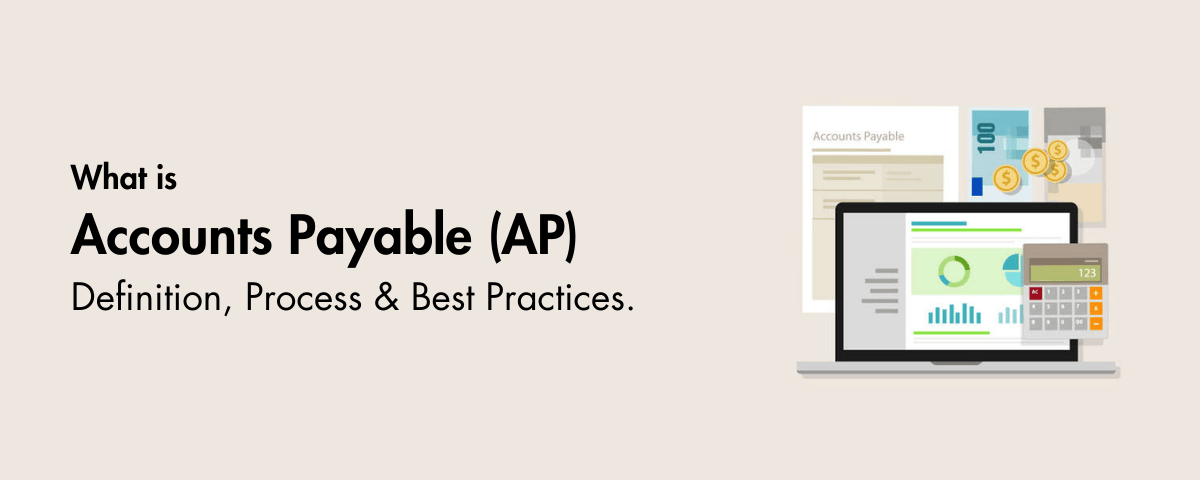It’s not just about “bills to be paid.” It’s about trust, timing, and keeping your operations running without a hitch. Each time you delay a payment beyond terms, you’re not just risking late fees, you’re chipping away at vendor confidence.
At Accountably, we’ve seen how a well-run AP process can be the difference between a business that operates smoothly and one that’s constantly scrambling. Our offshore staffing and back-office solutions help CPA firms, EAs, and accounting practices keep AP accurate, compliant, and on schedule, without drowning their in-house teams in repetitive tasks.
Quick Takeaways About AP:
- AP = short-term liabilities you owe to suppliers for goods or services on credit.
- It’s recorded on your balance sheet as a current liability, typically due in 30–90 days.
- Managing it well means verifying invoices, matching them to purchase orders, and paying on time.
- Strong AP practices maintain vendor relationships and keep your cash flow predictable.
- AP isn’t just supplier invoices, it includes utilities, professional fees, and other short-term obligations.
Why This Matters for Your Firm
Think of AP as your financial reputation with vendors. A sloppy process signals unreliability. A clean, consistent process says, “We’re professional, we value your partnership, and we keep our commitments.” That’s exactly what Accountably helps firms achieve, without adding more headcount or overloading your current team.
Table of Contents
- What “Accounts Payable” Really Means
- Why AP Management Can Make or Break Your Firm
- The Building Blocks of an Accurate AP Process
- Trade Payables vs. Accounts Payable, What’s the Difference?
- AP’s Role in Your Financial Statements
- How to Record Accounts Payable Transactions
- Step-by-Step: The Accounts Payable Process
- Internal Controls, Your First Line of Defense
- Auditing AP, Finding issues Before They Find You
- Automation, The Game-Changer for Efficiency
- Timing Your Payments for Maximum Control
- Vendor Relationships, The Hidden Currency
- Working Capital Optimization
- AP Turnover Ratio, How Fast Are You Paying?
- Days Payable Outstanding (DPO), Your Average Payment Window
- Cash Conversion Cycle (CCC), The Big Picture
- Essential Skills Every AP Team Needs
- Why SOPs Are the Backbone of AP
- Bills Payable, A Key Part of AP
- Accounts Payable vs. Accounts Receivable, Two Sides of the Same Coin
- Timely Payments, The Mark of a Reliable Firm
- Common AP Challenges
- Benefits of AP Automation
- Conclusion, AP as a Strategic Advantage
What “Accounts Payable” Really Means
At its core, accounts payable (AP) is a running list of what your business owes for goods or services received on credit. You’ve already got the benefit, now the clock is ticking to pay for it. In your balance sheet, AP sits under current liabilities because these debts are due soon, often within 30 to 90 days.
For example, if a vendor delivers $8,000 worth of office equipment today and invoices you with 60-day payment terms, that $8,000 instantly becomes part of your accounts payable. Until it’s paid, it’s part of your short-term obligations.
When managed properly, AP isn’t just a list of debts, it’s a snapshot of your company’s reliability, cash flow health, and operational discipline.
Why AP Management Can Make or Break Your Firm
Ignore AP, and the problems add up fast: late fees, strained vendor relationships, inaccurate financial reporting, and even a shaky cash flow. Get it right, and you’ll enjoy predictable outflows, stronger partnerships, and fewer headaches at month-end.
In our work at Accountably, we’ve seen both sides of the coin. Firms with a disciplined AP process avoid the chaos of missing invoices or last-minute payment scrambles. They have clear visibility over obligations, pay vendors on time, and maintain compliance without sacrificing efficiency.
The key benefits of effective AP management include:
- Healthy cash flow: You know exactly when money is leaving and can plan accordingly.
- Vendor trust: Timely, accurate payments lead to better terms and priority service.
- Compliance and accuracy: AP records directly affect your financial reporting, errors here can ripple into audits or tax filings.
A Note for Accounting Firms
If you’re a CPA, EA, or accounting firm owner, your clients expect flawless AP processes. But in reality, keeping AP both accurate and on time takes manpower, attention to detail, and constant follow-up. That’s where Accountably steps in. We provide dedicated offshore AP specialists who work as an extension of your team, so you keep every payment on track without overwhelming your staff.
The Building Blocks of an Accurate AP Process
A solid accounts payable process isn’t just “get invoice, pay invoice.” It’s a chain of checks and balances designed to protect your business from overpaying, paying for the wrong items, or missing critical due dates.
Here are the core pieces you’ll work with:
- Purchase Orders (POs) – These are your green light for purchases. They detail exactly what you ordered, at what price, and on what terms.
- Receiving Reports – When goods arrive, you confirm quantities and condition. This ensures you only pay for what you actually got, not what was promised on paper.
- Vendor Invoices – This is the bill your supplier sends, outlining what’s owed and by when.
- Payment Records – Proof of settlement, whether by check, ACH transfer, or other methods. These records are critical for audits and vendor disputes.
At Accountably, we ensure these documents are matched and verified before payment leaves your account. Our team uses a three-way match, PO, receiving report, and invoice, to catch errors early and keep your books clean.
Everyday Examples of AP in Action
Think of your AP ledger as a living list of short-term obligations. Here are common situations where AP comes into play:
- Supplier invoices for inventory, office equipment, or raw materials purchased on credit.
- Professional service bills from consultants, legal advisors, or contractors.
- Utilities like electricity, water, internet, and gas.
- Subscription renewals for accounting software, industry tools, or cloud storage.
- Professional fees such as annual audit charges or tax advisory services.
Each of these gets logged as accounts payable until payment is made.
Why Many Firms Struggle Here
For small to mid-sized firms, these moving parts often get scattered, POs in one folder, invoices in another, and payment records in someone’s inbox. This chaos leads to missed due dates, duplicate payments, or even fraud.
By outsourcing AP functions to Accountably, you centralize the process. Our offshore AP specialists handle the document matching, data entry, and payment scheduling while your in-house team focuses on client work and growth initiatives.
Trade Payables vs. Accounts Payable, What’s the Difference?
People often use “trade payables” and “accounts payable” interchangeably, but they’re not quite the same.
- Accounts Payable (AP): The umbrella term for all short-term obligations your business owes, utilities, professional fees, subscription renewals, you name it.
- Trade Payables: A subset of AP, these are specifically tied to goods you’ve bought for resale or production. Think raw materials for manufacturing or inventory for your store.
For example, if you’re an accounting firm, your trade payables might be limited, maybe just office supplies or equipment. But your accounts payable? That list could include everything from your monthly accounting software subscription to outsourced IT support.
Why does this matter? Separating the two gives you sharper insights into operational efficiency and supply chain health. At Accountably, we set up AP tracking systems that make these distinctions clear, so you’re not lumping everything into one catch-all category and missing valuable insights.
AP’s Role in Your Financial Statements
On your balance sheet, accounts payable shows up as a current liability, meaning these debts are due within the year. Each vendor invoice you validate and record adds to this figure. When you pay those invoices, the AP balance drops accordingly.
Here’s why it’s so important:
- Liquidity insight: AP directly affects your cash flow position. A high AP balance might mean you’re holding onto cash longer (good for liquidity), or it could be a red flag for delayed payments.
- Compliance and transparency: Stakeholders, auditors, and tax authorities all look at your AP records to understand your short-term obligations.
- Cash flow forecasting: AP data helps predict when money will leave your account, which is crucial for planning.
At Accountably, we reconcile AP balances regularly, matching vendor statements, invoices, and payment records, to ensure your financial statements are accurate to the cent. This keeps you compliant, audit-ready, and in control of your cash flow story.
How to Record Accounts Payable Transactions
Recording AP entries might look straightforward, but accuracy here is non-negotiable. In double-entry bookkeeping, every AP transaction touches at least two accounts:
- Credit: Accounts Payable (liability goes up)
- Debit: Expense or asset account (reflects what you bought)
Here’s a simple flow:
- Receive invoice – Vendor sends a bill for goods or services received.
- Verify details – Ensure invoice matches the purchase order and delivery records.
- Post to ledger – Debit the expense or asset account, credit AP.
- Make payment – Debit AP (reducing liability), credit cash or bank.
At Accountably, our AP specialists handle this process daily for CPA and accounting firms. We ensure invoices are matched and posted accurately, so your balance sheet reflects the real picture, not inflated liabilities or missing payments.
Why Invoice Matching is Your Best Friend
Invoice matching isn’t just a “best practice”, it’s your first line of defense against overpaying, paying for things you never received, or falling victim to fraud.
The gold standard is a three-way match:
- Purchase Order (PO) – What you agreed to buy.
- Receiving Report – What you actually received.
- Vendor Invoice – What you’re being billed for.
By comparing these three, you catch discrepancies before they cost you. Maybe the vendor billed for 200 units, but you only received 180. Or the invoice reflects a higher price than your PO stated. Without matching, those errors slide through unnoticed.
How Accountably Handles It
For many firms, invoice matching is where AP bottlenecks happen, too many invoices, not enough time to check them thoroughly. At Accountably, we remove that bottleneck by assigning trained AP staff to handle the entire verification process. They chase down missing documents, flag discrepancies, and ensure only approved, accurate invoices hit your books.
This doesn’t just protect your cash, it keeps your vendor relationships healthy because every payment is backed by a clean paper trail.
Reconciliation & Error Checks, Your Safety Net
Even after invoices are matched and posted, AP isn’t a “set it and forget it” process. Regular reconciliation is your insurance policy against inaccuracies that could ripple through your financial statements.
Here’s how a solid reconciliation process works:
- Compare your AP ledger with vendor statements and your general ledger.
- Scan for red flags like duplicate payments, incorrect amounts, or invoices without matching POs.
- Investigate discrepancies by contacting vendors or checking internal records.
- Document every adjustment to maintain a clear audit trail.
Many firms skip these steps because they take time, but skipping them is risky. At Accountably, our AP teams run these checks on a set schedule, using both automation and human review. The result? Fewer surprises during audits and month-end closings.
Step-by-Step: The Accounts Payable Process
Think of AP as a controlled pipeline, where every invoice follows the same journey from arrival to payment.
- Invoice Receipt – Vendor sends the bill after goods or services are delivered.
- Validation – Compare invoice details with the PO and receiving report to confirm accuracy.
- Approval & Coding – Assign the correct expense category, route for approval.
- Entry into Accounting System – Post the transaction, updating both your AP ledger and expense accounts.
- Payment Scheduling – Set payment dates according to agreed terms (Net 30, Net 60, etc.).
- Execution – Release the payment and record the outflow.
When all of these steps happen on schedule, your cash flow stays predictable and your vendor relationships stay strong.
Where Accountably Fits In
For many CPA firms, the process breaks down between steps 2 and 4, validation and posting. That’s when missing documents, slow approvals, and data entry backlogs start piling up. Accountably bridges that gap by assigning dedicated offshore AP specialists who live inside your workflow. They validate, code, and post invoices as they come in, so payments are always on track without overloading your in-house staff.
Internal Controls, Your First Line of Defense
Accounts payable is one of the most fraud-prone areas in any business, which is why internal controls aren’t optional, they’re essential. Strong controls protect against unauthorized payments, duplicate invoices, and even vendor fraud.
Key AP controls include:
- Segregation of Duties – The person who approves payments shouldn’t be the one who processes them.
- Approval Hierarchies – Payments require sign-off from the right level of management.
- Vendor Verification – Confirm legitimacy before adding any new vendor to your system.
- Audit Trails – Keep a record of every AP action for transparency.
At Accountably, we build these controls into our AP support model. Our offshore teams follow strict SOPs and keep every transaction documented, so clients can pass audits with confidence.
Auditing AP, Finding issues Before They Find You
Even the best-run AP processes need regular audits to stay clean. Audits catch discrepancies, ensure compliance with tax regulations, and verify that your controls are working.
Our AP specialists at Accountably perform internal reviews before your official audit ever begins. That means reconciling balances, verifying vendor histories, and confirming that every payment is backed by complete documentation.
Automation, The Game-Changer for Efficiency
Manual AP processes eat up time, invite errors, and slow down payments. That’s why many firms are turning to automation tools, especially when paired with skilled human oversight.
Automation can:
- Capture and code invoices automatically with OCR (optical character recognition).
- Route invoices for approval based on set rules.
- Schedule payments to hit exactly on due dates.
- Integrate seamlessly with your existing ERP or accounting software.
But here’s the catch, automation is only as good as the people running it. At Accountably, we combine the best AP automation tools with trained staff who review exceptions, resolve discrepancies, and keep your system running smoothly.
Timing Your Payments for Maximum Control
When you manage AP well, you can keep cash in your business longer without upsetting suppliers. The key is to pay within agreed terms, neither too early nor too late.
Why timing matters:
- Paying too early reduces available cash you could use for growth or emergencies.
- Paying too late risks late fees and damages vendor trust.
- Paying on time keeps both your cash flow and your relationships in good shape.
At Accountably, we help firms monitor every due date and use automation to schedule payments right on time, so you’re never leaving money idle or scrambling to fix a strained vendor relationship.
Vendor Relationships, The Hidden Currency
Vendors remember who pays reliably. Good payment habits can unlock better credit terms, priority service, and even discounts. Poor habits? They can lead to stricter terms or losing a trusted supplier altogether.
Our AP teams at Accountably keep vendors informed on payment status, resolve disputes quickly, and ensure every payment aligns with agreed terms. That proactive communication keeps relationships strong, even when payment terms are stretched to preserve cash.
Working Capital Optimization
AP isn’t just about paying bills, it’s a lever for managing your working capital. By extending your Days Payable Outstanding (DPO) within agreed terms, you can:
- Keep more cash on hand.
- Reduce reliance on short-term borrowing.
- Improve liquidity ratios.
But there’s a balance to strike. Push DPO too far and you risk losing vendor goodwill. At Accountably, we help firms hit the sweet spot, using data and vendor insights to optimize payment timing without jeopardizing supplier trust.
AP Turnover Ratio, How Fast Are You Paying?
Your accounts payable turnover ratio shows how many times you pay off supplier obligations in a given period, usually a year. It’s calculated as:
AP Turnover = Net Credit Purchases ÷ Average Accounts Payable
- High turnover means you’re paying suppliers quickly, good for relationships, but it might tie up cash sooner than necessary.
- Low turnover suggests slower payments, which might conserve cash but could signal payment delays or strained vendor relations.
At Accountably, we track this ratio for our clients so they can see if their payment habits match their cash flow goals and vendor agreements.
Days Payable Outstanding (DPO), Your Average Payment Window
DPO tells you how many days, on average, you take to pay suppliers after receiving goods or services.
DPO Formula: (Average Accounts Payable ÷ Cost of Goods Sold) × 365
- Higher DPO = you’re holding onto cash longer.
- Lower DPO = you’re paying quickly.
There’s no “perfect” DPO, it depends on your business strategy and vendor expectations. That’s why Accountably customizes AP workflows to match both your financial objectives and the terms you’ve negotiated with suppliers.
Cash Conversion Cycle (CCC), The Big Picture
The CCC measures how quickly you can turn investments in inventory and receivables into cash. Accounts payable plays a direct role here because delaying payments (within agreed terms) can shorten your cycle and boost liquidity.
Here’s how AP fits into the CCC equation:
- Extend DPO wisely to hold onto cash longer.
- Coordinate with AR and inventory so payment timing aligns with when cash comes in.
- Avoid extremes, stretching payments too far can harm vendor trust, while paying too soon drains liquidity.
Accountably helps firms actively manage their CCC by integrating AP timing with overall cash flow strategy, ensuring smooth operations without sacrificing relationships or compliance.
Essential Skills Every AP Team Needs
Running accounts payable is more than just processing invoices. The best AP teams share a set of skills that keep payments accurate, compliant, and on time:
- Attention to Detail – Every number, date, and vendor name matters. Even a small typo can trigger payment errors.
- Communication Skills – Coordinating with vendors, internal departments, and managers to resolve discrepancies quickly.
- Software Proficiency – Comfort with accounting platforms, AP automation tools, and data entry systems.
- Process Discipline – Following procedures step-by-step to avoid skipped approvals or missing documentation.
- Compliance Awareness – Understanding tax regulations, internal controls, and audit requirements.
At Accountably, our offshore AP specialists are trained in these skills from day one. They work as part of your team, adopting your systems and standards while bringing the discipline and accuracy that comes from focused expertise.
Why SOPs Are the Backbone of AP
Without Standard Operating Procedures (SOPs), AP quickly turns into chaos, missed due dates, inconsistent approvals, and vendors chasing payments. SOPs create a repeatable, reliable process for every invoice, no matter the size or urgency.
A strong AP SOP includes:
- Invoice intake process – How invoices are received, logged, and organized.
- Validation steps – Matching invoices to POs and receiving reports before approval.
- Approval hierarchy – Who signs off and under what conditions.
- Payment scheduling – How and when payments are released to vendors.
Accountably helps firms document and implement these SOPs so every AP transaction follows the same controlled path. This not only prevents errors but also makes onboarding new staff, or integrating our offshore team, smooth and efficient.
Bills Payable, A Key Part of AP
Bills payable are essentially the backbone of your accounts payable ledger. They represent amounts owed to suppliers or vendors for goods or services you’ve received, typically due within 30 to 90 days.
Managing bills payable means:
- Verifying every document (POs, contracts, invoices) before payment.
- Recording them accurately as current liabilities on your balance sheet.
- Paying them on time to maintain trust and avoid penalties.
Accountably handles these steps for firms every day, tracking due dates, reconciling statements, and ensuring bills payable are processed without bottlenecks.
Accounts Payable vs. Accounts Receivable, Two Sides of the Same Coin
While accounts payable tracks what you owe to others, accounts receivable (AR) tracks what others owe to you. On your balance sheet:
- AP sits under current liabilities.
- AR appears under current assets.
Why it matters:
- AP management ensures you have enough cash to pay vendors on time.
- AR management ensures you’re collecting from clients quickly enough to cover those payables.
Accountably supports firms on both sides, managing AP to protect cash flow and AR to speed up collections, giving you a full picture of your working capital health.
Managing Vendor Relationships Through AP
Vendors aren’t just suppliers, they’re partners in your business’s success. Effective AP management strengthens these relationships by showing reliability and professionalism.
Best practices include:
- Quickly resolving invoice issues before they delay payments.
- Sticking to agreed payment schedules to build trust.
- Keeping clear documentation to avoid disputes.
- Maintaining open communication so vendors always know where they stand.
At Accountably, we take a proactive role, tracking payment statuses, alerting you to upcoming due dates, and keeping vendor communications smooth. This doesn’t just prevent problems, it opens the door to better terms, discounts, and priority service.
Timely Payments, The Mark of a Reliable Firm
Paying vendors on schedule isn’t just good manners, it’s good business. Timely payments:
- Avoid late fees and interest charges.
- Strengthen vendor trust.
- Protect your access to favorable terms.
To make this happen consistently, you need a system that tracks due dates, automates reminders, and keeps approvals moving. Accountably builds this discipline into your AP process so you never miss a deadline and always protect your reputation.
Common AP Challenges
Even well-run firms hit AP roadblocks, such as:
- Manual processing delays leading to missed due dates.
- Invoice errors that slow down approvals.
- Duplicate or unauthorized payments from weak internal controls.
- Overloaded staff juggling AP alongside client work.
Our experience at Accountably shows that outsourcing AP solves these problems quickly. You gain a dedicated team focused solely on keeping payables accurate, compliant, and on time, without burning out your in-house staff.
Benefits of AP Automation
When paired with skilled oversight, automation turns AP from a headache into a streamlined, predictable process.
Automation can:
- Capture and code invoices automatically.
- Route approvals instantly to the right person.
- Schedule payments exactly on due dates.
- Provide real-time AP reporting for better decision-making.
At Accountably, we combine automation with human expertise, ensuring that exceptions, disputes, and unusual transactions get the careful review they deserve.
Conclusion, AP as a Strategic Advantage
Accounts payable isn’t just a bookkeeping task, it’s a lever for cash flow, compliance, and vendor relationships. Firms that treat AP as strategic see fewer disputes, more predictable cash flow, and stronger supplier partnerships.
But building that kind of AP process in-house takes time, expertise, and resources that many firms can’t spare. That’s where Accountably comes in.
We provide CPA firms, EAs, and accounting practices with expert offshore staffing and back-office solutions that:
- Keep AP accurate and compliant.
- Free your in-house team to focus on client-facing work.
- Deliver consistent, timely vendor payments without stress.
When your AP runs like clockwork, you’re not just paying bills, you’re building a foundation for long-term growth and stability.








